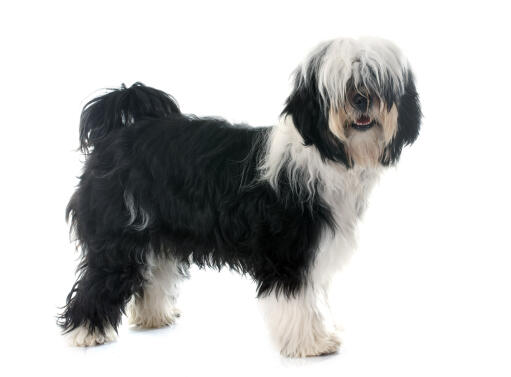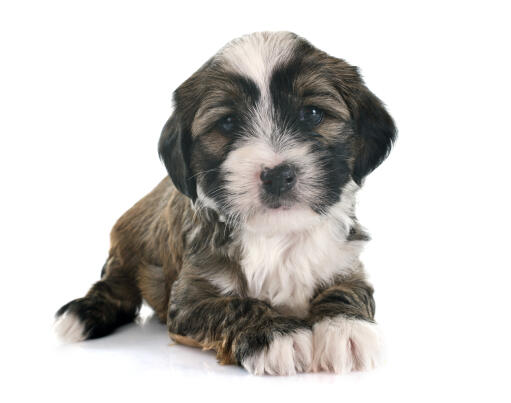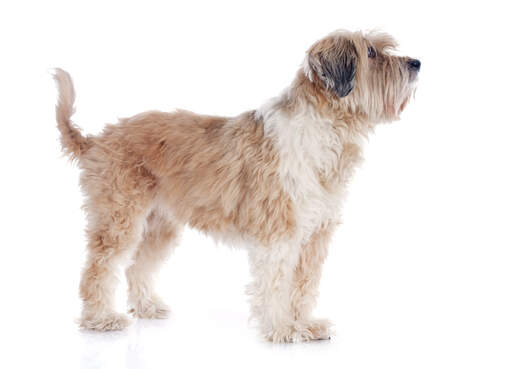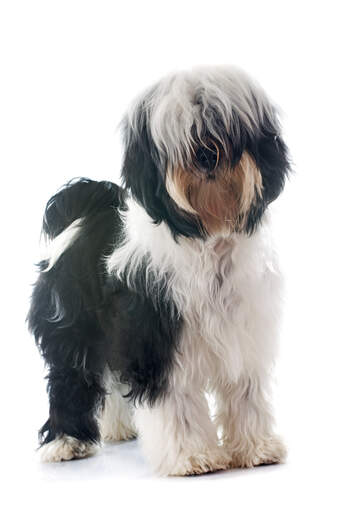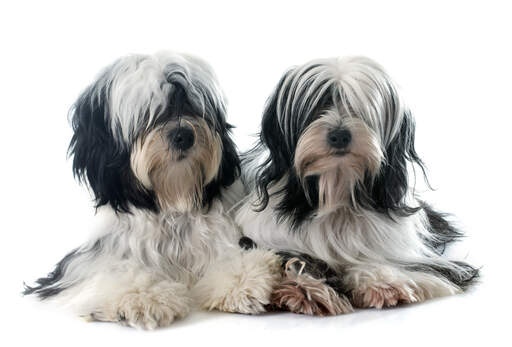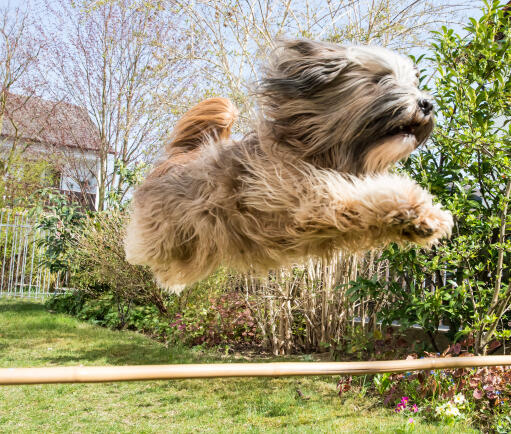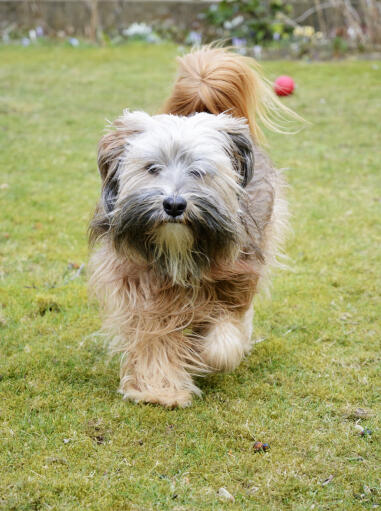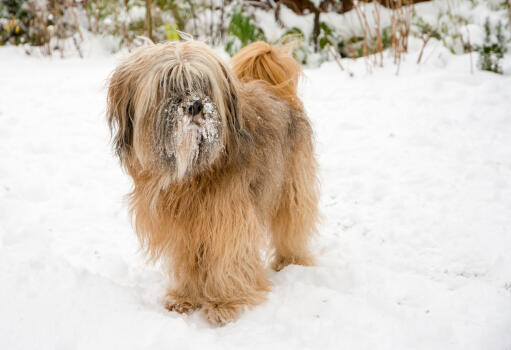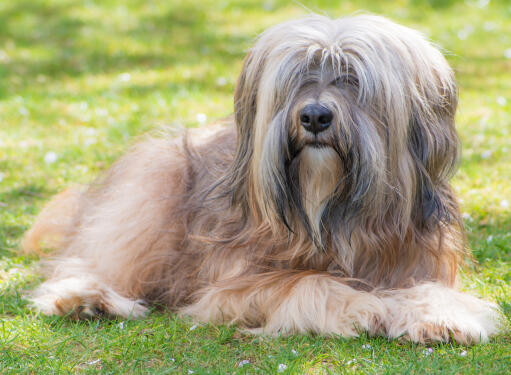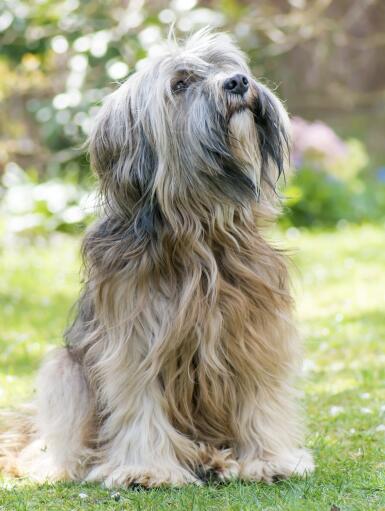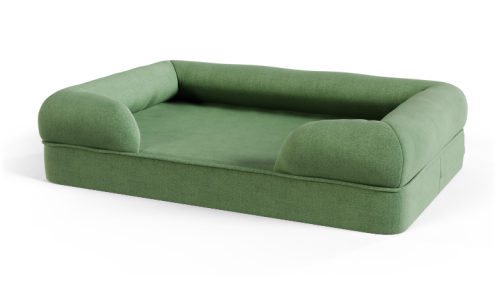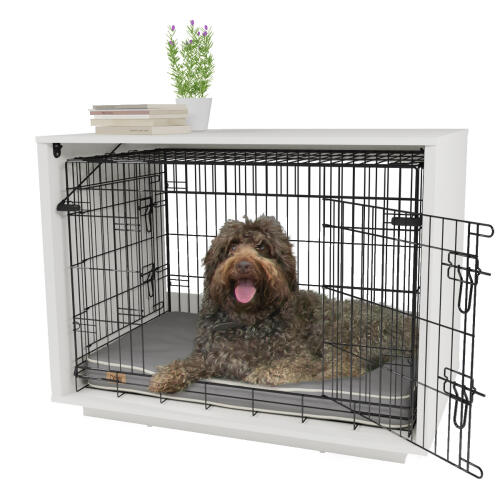Tibetansk terrierhund










History
The Tibetan Terrier originated from Asia and were kept as 'Luck Bringers' or 'Holy Dogs', by the Lamaist Monasteries. They were more companions than working dogs, but would be used to sometimes herd livestock. They are not Terriers, but were simply given that name as they were of Terrier size. The bred made it's way to England via India and soon after to America where it was admitted into the American Kennel Club in 1973. Still not seen very much.
Behaviour
The Tibetan Terrier is a sweet, friendly and charming dog, who likes to be around people. They are sensitive and can read their owners feelings and offer a comforting nudge or full on cuddle. They do well with respectful children and other dogs and pets if raised with them. Usually ok with strangers, they will bark at the door, but are quite welcoming when people come into the home. They have an active mind and can get up to mischief if left for too long, so best to get them used to short periods alone from the start. This will also prevent separation anxiety. Tibetan Terriers are clever, but stubborn and will only learn when they want to. Training should be done in short sessions and made fun. They like to solve problems and aren't too keen on repetition. Patience and a sense of humour is needed, plus reward based training. Problem solving games work well and encourage them to use their brains, which they seem to enjoy. Generally speaking, they aren't especially active dogs, but do like a run around a park with their owner or another dog. Some dogs will want to walk for hours, whilst others will do their business then want to go home. It depends on the individual. They can do quite well at agility competitions and tracking but really thrive as therapy dogs, where they can receive lots of attention. Play is important to them and they need an owner who has time for a game of rough and tumble. They aren't demanding dogs as such, only with your attention. Sleeping on your sofa will be common, but your bed is preferred. Owners often trip over this breed as they are never far from your side.
Their long coat can get matted and pick up debris on walks, so a quick daily brush is best to keep it looking tidy. Bathing every 1-2 months is recommended and the occasional trim when the fur gets too long. They have a thick double coat as adults, with the outer coat shedding similar to human hair. The Tibetan Terrier is quite a hardy dog, but Lens Luxation and Progressive Retinal Atrophy (PRA) is associated with the breed. Minor concerns are Canine Hip Dysplasia and occasionally cataract.
Temperament
Tibetan Terriers hve a loving and companionable temperament. Adaptable little dogs that will generally be very happy so long as they are in a loving environment. One of their favourite things to do is to charge around in the snow but they also love a cuddle on the sofa. They are ok with strangers (both animal and human). However there is still room for improvement so early socialisation is important for a well rounded dog.
Health Problems
Health problems that may affect Tibetan Terriers include canine hip dysplasia (CHD), elbow dysplasia, patellar luxation (dislocation of the kneecap), skin growths, ear infections, epilepsy, heart disease, progressive retinal atrophy (PRA: degeneration of the retina which can lead to blindness), cataracts and lysosomal storage disease (affects nervous system).
Breed Details
- Status: Rare
- Life Expectancy: 12 - 15 years
- Weight: 8 - 14 kg
- Højde: 14 - 16"
- Rare: Nej
- Coat: Long
- Grooming Requirements: Everyday
- Town or Country: Either
- Minimum Home Size: Small House
- Minimum Garden Size: Small to Medium Garden
- Breed Type: Companion Dog
- Størrelse: Medium
- Energy Level: Medium
- Exercise Required: Up to 1 hour

